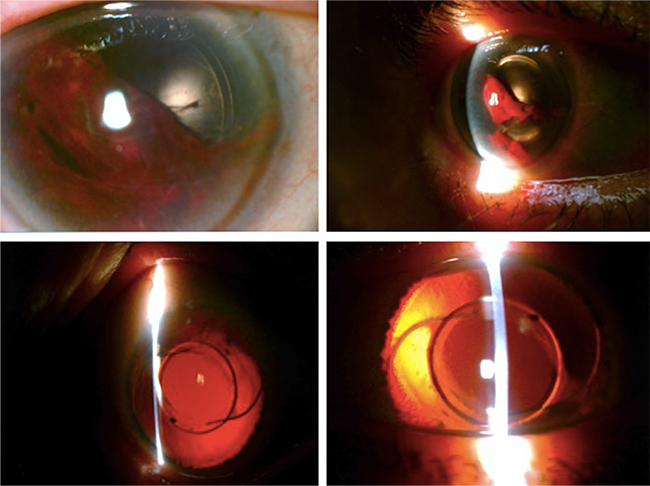Blink
Can You Guess December's Mystery Condition?
Download PDF
Make your diagnosis in the comments, and look for the answer in next month’s Blink.

Last Month’s Blink
Albinism
Written by Michael W. Stewart, MD, and Jason Calhoun, Mayo Clinic, Jacksonville, Fla. Photo by Jason Calhoun.
A 47-year-old woman underwent a routine ophthalmic evaluation for diabetic eye disease. She reported suffering from poor visual acuity and light sensitivity her entire life, but she had no recent changes in vision. The general physical examination revealed white hair and pale skin. Her best-corrected visual acuity measured 20/400 OU, and she had horizontal nystagmus. Color photographs of the fundus revealed an absence of pigmentation, and the choroidal vessels were easily visualized (Fig. 1). The slit- lamp examination showed hypopigmentation of the iris with transillumination throughout (Fig. 2). The fovea could not be found on optical coherence tomography scanning (Fig 3).
A more detailed medical history confirmed that the patient had oculocutaneous albinism. This autosomal recessive condition, characterized by decreased synthesis of melanin, affects 1 in 20,000 people. Ocular abnormalities are often noted at birth but remain stable throughout life.
Read your colleagues’ discussion.
| BLINK SUBMISSIONS: Send us your ophthalmic image and its explanation in 150-250 words. E-mail to eyenet@aao.org, fax to 415-561-8575, or mail to EyeNet Magazine, 655 Beach Street, San Francisco, CA 94109. Please note that EyeNet reserves the right to edit Blink submissions. |